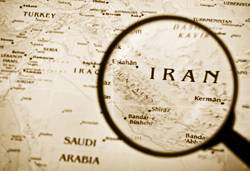Opinion: Oil Market Risks Grow as Chaos Spreads
Iran, Syria, Sudan, Libya, Nigeria and now Iraq: the crude oil market has weathered a long list of actual and threatened supply shocks with remarkable calm.
According to the U.S. Energy Information Administration (EIA), unplanned disruptions have removed around 2.5 million barrels per day from the crude market since the start of 2011.
But for most of that time, Brent, the international marker, has traded in a narrow range around $105 per barrel and daily price volatility has fallen to the lowest level for 20 years.
The absence of volatility despite increasing chaos across much of the Middle East and Africa has been the oil market's most surprising characteristic.
To paraphrase Arthur Conan Doyle's fictional detective Sherlock Holmes: the oil prices are the dog that did not bark in the night time ("Silver Blaze" 1894).
INCREASING CHAOS
The market has been able to absorb lost supply because demand growth has been moderate and alternative supplies have been available from North American shale and Saudi Arabia.
U.S. output of crude and condensates has risen by around 2 million barrels a day since 2011, and Saudi Arabia has increased its own liquids production by a similar amount over the same period, according to the EIA.
Net U.S. oil imports have fallen to the lowest in nearly three decades, as domestic production rises and demand falls.
In Europe, too, demand for gasoline and diesel is stagnant or falling as vehicles become more efficient and consumers use their cars much less than in the past.
But these factors do not fully explain why oil prices have been so steady in the face of so much "geopolitical risk".
Among the core members of the Organization of Petroleum Exporting Countries (OPEC): one is a failed state (Libya); two more appear to be disintegrating amid worsening violence (Iraq and Nigeria); one is under crippling sanctions (Iran); and there are question marks over the future of another following the death of a charismatic leader (Venezuela).
Only Saudi Arabia and its close allies Kuwait and the United Arab Emirates appear stable and reliable crude suppliers.
CONCENTRATION RISK
But look beyond the headline interruptions and oil supplies have become a much more diverse place since the oil shocks of the 1970s and 1980s. They have had to be because of the uncertainty and interruptions in supplies from the traditional exporters. In that diversity lies greater security for oil consumers.
The oil shocks of 1973 and 1979 accelerated the development of new oil provinces in Alaska, the Gulf of Mexico, the North Sea and on the territory of the former Soviet Union, which are still producing today, though most of them at reduced rates.
Uncertainty about traditional supplies, and the resource nationalism of many OPEC members, encouraged the development of less conventional resources such as deepwater, oil sands and now shale.
As a result, the oil market now has many more sources of supply than in the early 1980s.
One way to measure the diversity of supplies is to construct a Herfindahl-Hirschman Index for the crude oil market.
Antitrust lawyers employ H-H indices to measure the degree of market concentration or monopoly power in a market. Ecologists measure the diversity in a population using a related measure known as the Simpson index.
The index ranges from zero to 1. If production is controlled entirely by a single firm or country, the H-H index is 1. If there are a large number of small firms each supplying just a tiny fraction of the market, the index approaches zero.
In the case of oil producing nations, the H-H index stood at around 0.11 in 1981, roughly the same as if the whole market was equally shared among just nine countries. If the United States is excluded, the H-H index was 0.16, as if the market was shared equally between just six countries.
By 2009, these measures of market concentration had fallen to 0.056 and 0.068 respectively, as if the market was shared among 18 or 14 equal-sized producers.
Market concentration has since increased a little, as the United States has become a giant producer once again, interruptions have taken their toll, and Saudi Arabia has boosted its output.
But even after these developments, concentration ratios are half what they were at the start of the 1980s.
Because supplies have become much more diverse, the market is less likely to react violently to the loss of production (actual or threatened) in any one country.
The obvious exception is Saudi Arabia, which is simply too important as a source of exports. But most observers have concluded there is no threat to the kingdom's production.
SECURITY IN DIVERSITY
Oil analysts tend to measure political and production risks in terms of the margin of "spare capacity", which indicates how easily barrels can be replaced. But diversity of supplies is equally if not more important in explaining risk. In fact it may be more important.
If diversity is accepted as a key element of risk, it is possible to define various measures of the market's susceptibility to shocks. These range from concentration ratios to the sort of N-1 criteria used in the electricity industry (which measure the impact from the total or partial loss of the current largest source of supply).
Obviously Saudi Arabia remains the largest N, and the loss of Saudi production would be catastrophic for global markets. But it is possible to examine the impact of smaller Ns like Libya and Iraq.
Supply diversity cannot prevent all shocks. In particular, it cannot prevent shocks arising from the demand side such as the acceleration in China's oil demand between 2004 and 2008.
Diversity can, however, go a long way to explaining why the market has remained comparatively calm in the face of numerous disruptions since 2011.
So far, supply diversity has shielded the markets from the sort of volatility which was common in earlier periods. But diversity can only go so far and it would be unwise to rely on it so much in future.
As the chaos across Africa and the Middle East, coupled with sanctions on Iran, knocks out more and more sources of production, supplies have started to become more concentrated again. Some of the diversification achieved during the 1980s and 1990s is starting to be reversed. The H-H index is rising.
The oil market is becoming increasingly dependent on U.S. shale and Saudi Arabia. U.S. supplies are a source of strength and stability. Saudi supplies are not, given the kingdom's proximity to trouble zones in the Middle East.
Optimists may conclude the worst of the danger has passed: with so much of the highest-risk African and Middle Eastern oil already forced off the market, there is little more that could go wrong.
Pessimists can point out that there are still millions of barrels at risk in Nigeria, Iraq and Libya, and only a moderate margin of spare capacity to replace them if the security situation worsens further.
(The opinions expressed here are those of the author John Kemp, a columnist for Reuters. Editing by Susan Thomas)














